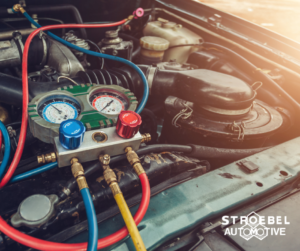Air conditioning is a luxury that most of us don’t want to live without. If your vehicle’s air conditioner isn’t working as it should, it can be extremely frustrating and even dangerous. But don’t worry! The following steps will help you troubleshoot any issues with your vehicle’s air conditioning and get back to enjoying the cool breeze.
Notice if the air conditioning has stopped working.
Check that the air conditioning is not working. Take note of what you observe.
Make sure that you’re not on a temperature setting where there’s no cooling.
Make sure that your vehicle isn’t on defrost mode, which could be preventing cool air from coming out of your vents even if everything else seems to be working fine.
Check that all the fuses are still in place.
Fuses can blow when there’s a short circuit, and this is usually caused by a wire or component getting too hot for too long. If you suspect your air conditioning isn’t working because of a blown fuse, check to see if any wires have fallen off or melted together. You may also want to look at the wiring harnesses near your car’s fuse box (usually under or behind your dashboard).
Check for coolant leaks and get them repaired.
Check the coolant level in the radiator and expansion tank (if equipped). If it’s low, add enough coolant to bring it up to the “Full” mark on both.
Look for signs of leaks at hoses and connections, particularly where they attach to a vehicle’s air conditioning compressor or condenser/evaporator assembly. Repair any leaks you find as soon as possible–they can damage other components in your vehicle’s cooling system if left unchecked!
Old or damaged hoses will need to be replaced with new ones. Hoses that are in disrepair will break, and you don’t want that to happen when it is an extra hot or humid day.
Check for blocked vents or filters.
If you see clogs in your vents or air filter, it’s time to clean them out. If there is too much buildup, you will be farther ahead by replacing the filter.
Use a vacuum cleaner with an attachment that can fit in your car’s vents, then turn it on and suck out any debris that has collected there over time.
Replace the vehicle’s cabin air filter if necessary (it should be replaced every 12-15 months).
Make sure there is no damage to the evaporator coil.
The evaporator coil is part of your vehicle’s air conditioning system that cools and dehumidifies the air. It’s located in front of or behind your dashboard, depending on whether you have a front- or rear-wheel drive vehicle. To check for damage to this component:
- Look for signs of corrosion or discoloration on top of the evaporator coil.
- If there are any signs of damage, you’ll need to replace it with a new one.
The best advice we have is to have your vehicle maintained regularly. This way, we can help you prepare for repairs. Our staff will note things that need repair, with an approximate time frame on how long you have. Nobody likes to receive bad news about their vehicle, and we do our part to help you be prepared.
Schedule your maintenance today!


